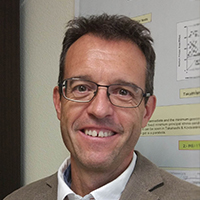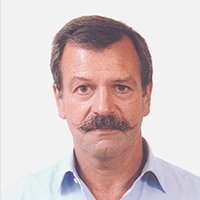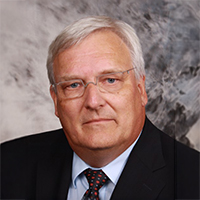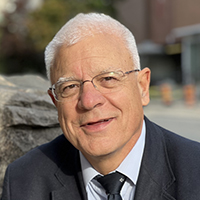Workshops - 16.06.2025
PRICE: 2500 NOK inc. VAT
Important Notice:
Workshops 1–4 will take place at SINTEF, located at S.P. Andersens veg 15, Trondheim, rather than the conference hotel. Transportation between the conference hotel and SINTEF will be arranged for all participants.
Click here to view the location on Google Maps.
WS 01- In-situ rock stress measurements
Demontration and applications
Photo: Simon Hagen/Trond Larsen
In this workshop, a quantitative way of defining rock stress will be introduced, i.e. stress measurements. Attendees will be provided overview of in-situ rock stress measurement methods being commonly used today. In addition to that, SINTEF methods for in-situ rock stress measurement will be introduced including development, procedure with equipment and exercise, and applications of the stress measurements.
Lecturers
|
|
|
|
|
| PhD. Mario Morales SINTEF |
PhD. Yared Bekele SINTEF |
Trond Erik Larsen SINTEF |
PhD. Nghia Quoc Trinh SINTEF • SINTEF’s Laboratory |
Program 16.06.2025
| 09:00 - 09:30 | Registration |
| Theoretical framework and Lab testing | |
| 09:30 - 09:35 | Opening and introduction |
| 09:35 - 10:00 | Overview of rock stress measurement |
| 10:00 - 10:30 | SINTEF method and development |
| 10:30 - 10:45 | Coffee break |
| 10:45 - 11:45 | Laboratory visit with demonstration |
| 11:45 - 12:30 | Lunch |
| Hands on: calculation | |
| 12:30 - 13:00 | Stress calculations from strain rosette |
| 13:00 - 14:00 | Exercise and calculation |
| 14:00 - 14:15 | Coffee break |
| 14:15 - 15:00 | Project applications: civil and mining |
| 15:00 - 15:25 | Open discussion |
| 15:25 - 15:30 | Closing remarks |
WS 03 - Rock bolt and testing
Design aspect, produce, and laboratory testingRock bolts are the most commonly used support elements in various rock engineering projects, such as underground mines, hydropower, underground infrastructures, and rock slopes. The design of rock bolts can be different depending on the purpose of supporting individual rock blocks or in providing a systematic support measure. With long experience of use in many applications and extensive research and development, there are many standard and guidelines for rock bolt design, which may be suitable for different situations. Thus, engineers may sometimes have difficulties to decide which guidelines to follow, and it often ends up in excessive design of rock bolts.
This workshop presents the most important aspects in understanding functionality of rock bolts, the common design and testing methods. Participants will have chance to obtain the overall and also state-of-the-art in rock bolt design and testing. The participants can also learn from failure and successful projects.
Lecturers
|
|
|
|
|
| Prof. Charlie Chunlin Li NTNU |
PhD. Bjarte Grindheim Sweco |
Erik Thomsen VIK Ørsta |
Philip O. Møller Pretec |
| PhD. Nghia Quoc Trinh SINTEF • SINTEF’s Laboratory |
Program 16.06.2025
| 09:00 - 09:30 | Registration |
| Morning session | |
| 09:30 - 09:35 | Opening and introduction |
| 09:35 - 10:00 | Rock bolt categories and their reinforcement functions |
| 10:00 - 10:30 | Rock anchor: failure modes, design, and testing |
| 10:30 - 10:45 | Coffee break |
| 10:45 - 11:10 | Spiling bolt: design and 3D modelling |
| 11:10 - 11:45 | Norwegian rock support – Design and theory (Vik Ørsta/Pretec) |
| 11:45 - 12:30 | Lunch |
| Afternoon sessions | |
| 12:30 - 13:05 | Norwegian rock support – Practical Application (Vik Ørsta/Pretec) |
| 13:05 - 13:35 | Laboratory Full-Scale Rock Bolt testing |
| 13:35 - 14:00 | Group discussion |
| 14:00 - 14:15 | Coffee break |
| 14:15 - 15:25 | Laboratory visit |
| 15:25 - 15:30 | Closing remarks |
WS 04 - Rock grouting and sustainability
Presentations and group work
Photo: Helene Strømsvik
Pre-excavation rock mass grouting constitutes a substantial proportion of the CO2 emissions associated with tunnelling activities, particularly in urban environments. While significant advancements have been made over the past decade in reducing cement content in most cement-based construction materials, the adoption of such innovations in grouting materials within the tunnelling industry has been comparatively slow.
This workshop will explore various strategies for minimizing material consumption and reduce CO2 emissions in grout materials. The primary objective of the workshop is to identify opportunities for improvement and innovation, fostering advancements in this critical area.
The following areas will be covered and discussed:
• Examples of grout consumption and CO2 emissions
• Alternative methods to reduce grout consumption
• Alternative methods to reduce CO2 emissions from grout • Example from ongoing tunnelling project
• How contract inflicts on the grout consumption
The participants can contribute with knowledge sharing.
Program 16.06.2025
| 09:00 - 09:30 | Registration |
| 09:30 - 09:35 | Opening and introduction |
| 09:35 - 09:55 | Basic equations of rockgrouting - Mohamed El Tani (Rockgro) |
| 10:05 - 10:30 | General Concepts on Rock Grouting Design - Benoist Simon (Bechtel) |
| 10:15 - 10:35 | Low to medium pressure grouting to control water leakage in hydropower tunnels - Krishna Panthi (NTNU) |
| 10:35 - 10:50 | Coffee break |
| 10:50 - 11:05 | Hydrogeology and environmental permits - Åsa Fransson (University of Gothenburg and WSP Sweden) |
| 11:05 - 11:25 | CO2 emissions from cement and CO2 capture (CCU) - Cecilie Nøtvedt (Heidelberg) |
| 11:25 - 11:45 | Examples of grout consumption and CO2 emissions in projects - Hrefna Run Vignisdottir (SINTEF) |
| 11:45 - 12:30 | Lunch |
| 12:30 - 12:50 | Alternative methods towards more sustainable grouting - Helene Strømsvik (SINTEF) |
| 12:50 - 13:10 | Example of real-time monitoring of grouting in Lerstadtunnelen - Torkild Åndal (The Norwegian Public Roads Administration) |
| 13:10 - 13:20 | Preparation for group work - Abishek Shrestha (NTNU) |
| 13:20 - 14:00 | Group work |
| 14:00 - 14:15 | Coffee break |
| 14:15 - 15:25 | Presentation of group work and open discussion |
| 14:25 - 15:30 | Closing remarks |
| Mohamed El Tani Rockgro | Benoist Simon Bechtel |
Krishna Panthi NTNU | Åsa Fransson University of Gothenburgand WSP Sweden |
| Cecilie Nøtvedt Heidelberg | Hrefna Run Vignisdottir SINTEF | Helene Strømsvik SINTEF | Torkild Åndal The Norwegian Public Roads Administration |
| Abishek Shrestha NTNU |
WS 05 - The second generation of Eurocode 7 is here– use it!
Many new topics have been introduced, with rock engineering being one of them.
To support its implementation, four guidelines on specific aspects of design and two volumes of application examples have been developed and published as reports by the Joint Research Centre (JRC) of the European Union.
Currently, National Annexes are being prepared by National Standardisation Bodies.
Since 2015, the development of the second-generation Eurocode 7 has been led by the CEN/Technical Committee 250 “Structural Eurocodes” and its Sub-Committee 7 “Geotechnical Design” (TC250/SC7),
involving a large team of European geotechnical engineers. This process has also been supported by the Rock Engineering Platform (REP), a group of rock engineering experts from across Europe working under the auspices of TC250/SC7. In October 2023, the REP organised an informative Seminar in Salzburg, Austria, alongside a special issue of the journal Geomechanics and Tunnelling (Volume 16, Issue 5). This issue, titled Rock engineering design in tomorrow’s geotechnical toolbox, features six papers addressing key aspects of the revised Eurocode 7 relevant to rock engineering design. To further promote the use and awareness of the revised Eurocode 7 among rock engineers, the REP has decided to organize this one-day Seminar. The Seminar will cover organisational and implementation aspects, address a series of specific topics relevant to rock engineering, provide practical application examples of design of rock structures, and explore future perspectives in the field.
Program 16.06.2025
Session 1 - 9:00-13:00 – Introductory and specific topics
· Opening remarks
· The status of the 2
nd generation of Eurocode 7
Gunilla Franzén
· The design process and the 4 guidelines published as JRC reports
Luís Lamas
· Prescriptive rules for LS verification to EC7 – principles and example
Märit Berglind Eriksson
· Numerical models for LS verification to EC7 – principles and example
Herbert Walter, Rima Ghazal
· Probabilistic Methods for LS verification to EC7 – principles and example
Renato Pereira
· Discussion
- Coffee break -
· Geometrical properties and LS verification to EC7 – principles and example
José Estaire
· Rock bolts and rock surface support – different approaches to LS verification to EC7
Natalia Maca and Roger Olsson
· ISO standards for load testing of rock bolts
Natalia Maca
· ISO standards for laboratory testing of rock
Didier Virely
· Discussion
Session 2 – 14:00-18:15 – Design examples and perspectives for the future
· Geotechnical reliability example – requirements on design and construction
Gunilla Franzén
· Ground properties and ground model example
Didier Virely
· From derived to representative values
José Muralha, José Estaire
· LS verification of slopes – sliding and toppling
José Estaire, Paulo Pinto, Renato Pereira
· LS verification of rockfall protections
Maria Teresa Carriero
· Discussion
- Coffee break -
· LS verification of spread foundations
Witold Bogusz, Renato Pereira, Luís Lamas
· LS verification of rock bolts
Natalia Maca,
Didier Virely,
Rima Ghasal, Roger Olsson
· LS verification of rock anchors
Klaus Dietz
· Implementation of EC7 during execution and design service life
Witold Bogusz
· EN 1997:2025: one step in the continuing development of EN1997
John Harrison
· Discussion
· Closing remarks




Luis Lamas
LNEC
Portuguese National Laboratory for Civil
Engineering
Roger Olsson
Norwegian Geotechnical Institute
Gunilla Franzén
GeoVerkstan
Märit Berglind Eriksson
Itasca Consultants AB




Herbert Walter
Austria
Rima Ghazal
Artelia
Renato Pereira
LNEC
Portuguese National
Laboratory for Civil Engineering
José Estaire
CEDEX




Natalia Maca
Titan Polska
Didier Virely
CEREMA, Complexe scientifique de
Rangueil
José Muralha
Portuguese National Laboratory for Civil Engineering
Paulo Pinto
University of Coimbra




Maria Teresa Carriero
Politecnico di Torino
Witold Bogusz
Jacobs
Klaus Dietz
Dietz Geotechnik
Consult GmbH
John Harrison
University of Toronto
Session 1 - 9:00-13:00 – Introductory and specific topics
· Opening remarks
· The status of the 2 nd generation of Eurocode 7
Gunilla Franzén
· The design process and the 4 guidelines published as JRC reports
Luís Lamas
· Prescriptive rules for LS verification to EC7 – principles and example
Märit Berglind Eriksson
· Numerical models for LS verification to EC7 – principles and example
Herbert Walter, Rima Ghazal
· Probabilistic Methods for LS verification to EC7 – principles and example
Renato Pereira
· Discussion
- Coffee break -
· Geometrical properties and LS verification to EC7 – principles and example
José Estaire
· Rock bolts and rock surface support – different approaches to LS verification to EC7
Natalia Maca and Roger Olsson
· ISO standards for load testing of rock bolts
Natalia Maca
· ISO standards for laboratory testing of rock
Didier Virely
· Discussion
Session 2 – 14:00-18:15 – Design examples and perspectives for the future
· Geotechnical reliability example – requirements on design and construction
Gunilla Franzén
· Ground properties and ground model example
Didier Virely
· From derived to representative values
José Muralha, José Estaire
· LS verification of slopes – sliding and toppling
José Estaire, Paulo Pinto, Renato Pereira
· LS verification of rockfall protections
Maria Teresa Carriero
· Discussion
- Coffee break -
· LS verification of spread foundations
Witold Bogusz, Renato Pereira, Luís Lamas
· LS verification of rock bolts
Natalia Maca, Didier Virely, Rima Ghasal, Roger Olsson
· LS verification of rock anchors
Klaus Dietz
· Implementation of EC7 during execution and design service life
Witold Bogusz
· EN 1997:2025: one step in the continuing development of EN1997
John Harrison
· Discussion
· Closing remarks
|
|
|
|
|
|
Luis Lamas
LNEC
|
Roger Olsson
Norwegian Geotechnical Institute |
Gunilla Franzén
GeoVerkstan |
Märit Berglind Eriksson
Itasca Consultants AB |
|
|
|
|
|
|
Herbert Walter
Austria |
Rima Ghazal
Artelia |
Renato Pereira
LNEC Portuguese National Laboratory for Civil Engineering |
José Estaire
CEDEX |
|
|
|
|
|
|
Natalia Maca
Titan Polska |
Didier Virely
CEREMA, Complexe scientifique de Rangueil |
José Muralha
Portuguese National Laboratory for Civil Engineering |
Paulo Pinto
University of Coimbra |
|
|
|
|
|
|
Maria Teresa Carriero
Politecnico di Torino |
Witold Bogusz
Jacobs |
Klaus Dietz
Dietz Geotechnik Consult GmbH |
John Harrison
University of Toronto |